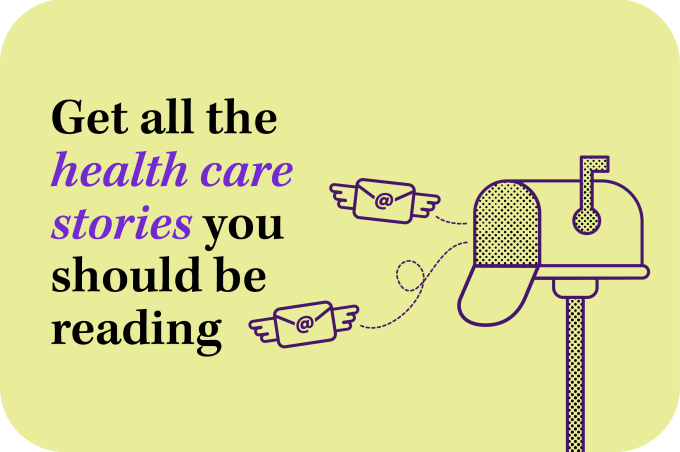When Susan Parisi, MD, first stepped into her role as chief wellness officer (CWO) at Geisinger in 2022, the country was just emerging from the deadliest phase of the COVID-19 pandemic that contributed to record physician burnout rates in the U.S. That required Dr. Parisi to jump right into the deep end to take Geisinger’s well-being strategy to the next level and help bring the health system out of a time where physician burnout rates nationwide were at an all-time high of 63%.
Dr. Parisi did have some experience under her belt, though. She had done some work on burnout at a prior organization and also attended the CWO course led by Tait Shanafelt, MD, in 2019. This helped lay the groundwork for what she would do when she got to Geisinger. The first step was to assess where things stood.
Geisinger is a member of the AMA Health System Program, which provides enterprise solutions to equip leadership, physicians and care teams with resources to help drive the future of medicine.
“Unless you know where you are, you’re not going to really know what you need to do or where you’re going to go,” Dr. Parisi said. “One advantage of being new to Geisinger was the opportunity to come in with fresh, unbiased eyes to make an objective assessment.”
“The bottom line was the first thing was assessing the current state using both qualitative and quantitative data,” she said. “A disadvantage of being both new to Geisinger and in a new CWO role at Geisinger was the challenge of quickly getting to know leaders, physicians and employees while at the same time building the degree of trust necessary for open, transparent conversations. There were one-on-ones talking to people and rounding.”
“My team was also participating in conversations. Some of it was done by our well-being navigators who were hearing the front-line voices while rounding and asking different questions,” Dr. Parisi said. “We do a lot of team interventions, so hearing what the different teams were doing was helpful, too.”
“Additionally, the social workers on the team were hearing from individuals who were really struggling and identifying where we had adequate resources and where others were needed,” she said. “Looking at all this qualitative data together was really helpful to see our current state.”
“Some of the quantitative data was process metrics and utilization metrics for programs that were already in place,” Dr. Parisi said. “We had some quantitative data from the engagements survey, which was helpful. But we knew that in order to do this work and know our current state of well-being, we also needed to have a well-being survey. That’s when we did the AMA’s Organizational Biopsy® and the Well-Being Index.
“It delayed things a little bit, but ultimately it gave us a really solid picture of where we were as an organization in terms of the culture, the programs and resources, and where we could build on the existing programs,” she added. “There were some programs in place that were solid programs, but they needed to be improved or they needed better visualization—one of them was the peer support program.”
From there, Dr. Parisi looked at where there were gaps and a need to create resources. Then it’s about “where do we need to go as an organization and learning what the organization needs,” Dr. Parisi said.
Be fluid with well-being strategy
“My charge in coming here was to create a well-being strategy that aligned with Geisinger’s overall strategy,” Dr. Parisi said, noting “we had some existing structure already and advocacy for this work through the Center for Professionalism and Well-Being.”
But “the real challenge as a leader in health care today, and as a new CWO, was to create a strategy that served the needs of the organization, but also was fluid, agile and dynamic enough to flex with the rapidly changing health care environment,” she said. “I was previously with organizations that had merged or been acquired, so I was familiar with that reality and knew that in order to create a solid strategy, I was going to have to build in that fluidity and flexibility to serve Geisinger’s needs.”
“Then, shortly after arriving, we became the inaugural member of Risant Health, so I am really happy that I went in with eyes open approach to needing to do what is right for Geisinger, but also be agile enough for the future,” Dr. Parisi said.
Embrace peer support
To move from getting your feet wet to going knee-deep in well-being work means “building those relationships and strengthening relationships in other departments that are going to help do the work,” Dr. Parisi said, noting that building relationships also helps in breaking down silos.
“We knew if we were constantly putting out fires, we weren’t going to be able to start to drive our strategy forward,” Dr. Parisi said. “So, part of the initial baseline strategy was to get those supports in place and a good example is our peer-support program.”
When Dr. Parisi first entered her role as CWO at Geisinger, there were 17 people enrolled in the peer-support program. This signaled a need to expand.
“We looked at the peer-support program and we said: What can we do to improve it?” she said. “We revamped the entire curriculum and the entire training program and made it shorter, more accessible and did a recruitment campaign.”
“In the course of two years, we’ve gone from 17 to 400 peer supporters, and it’s made a big difference when we’re responding to issues,” Dr. Parisi said.
Reduce stigma around seeking help
Part of Dr. Parisi’s work was also in “reducing the stigma around seeking help,” she said. Because “it still exists.”
“We did the credentialling change, but that is always a work in progress,” Dr. Parisi said. That is because “once the stigmatizing language is removed from the credentialing documents, the next important step is ensuring our physicians are aware.”
Geisinger has been recognized by the Dr. Lorna Breen Heroes’ Foundation as a “Wellbeing First Champion,” which means its credentialing applications are free from overly broad and invasive mental health questions.
Along those same lines is “making sure that access is there so that if somebody is in need, they can get what they need in a timely fashion.”
Turn to the AMA for guidance
“Working with the AMA has been wonderful. I could not do the work that I do without the AMA and my national partners,” Dr. Parisi said. “Obviously, I need the supportive leadership at Geisinger too and they’ve been wonderful, but because this is a developing field, it really is just so helpful to have those partnerships.”
The AMA Joy in Medicine™ Health System Recognition Program guidance also has helped set the course for Dr. Parisi and her colleagues.
“What has been really helpful for us is to be able to say that these are the best practices that the AMA recommends,” Dr. Parisi said.
For example, “knowing that a well-being assessment is included in the Joy in Medicine program helped promote a regular well-being survey as a best practice,” she said.
“The Joy in Medicine framework sets a strong foundation for how we deliver our strategy and tie it back to national best practices,” Dr. Parisi said, emphasizing that “I can’t say enough about the partnership we have with the AMA.”
As the leader in physician well-being, the AMA is reducing physician burnout by removing administrative burdens and providing real-world solutions to help doctors rediscover the Joy in Medicine™.
Show you’re doing the work
While earning recognition from the Joy in Medicine program is nice, “it’s not so much the recognition, but showing our employees and our leaders we are doing the work,” Dr. Parisi said. “What’s meaningful to me from the Joy in Medicine recognition is we are on this journey.
“We are digging in, we are diving in, we are knee-deep and really rolling up our sleeves and doing this work in a meaningful way,” she added. “That’s the most important thing about the Joy in Medicine program and we’re continuing to move the needle for our physicians and our nonphysician providers and all our employees.”
“I could not do this work alone,” said Dr. Parisi. “This is not just a CWO and the CWO team. This is an organizational effort.”
“If we don’t do it, we’re going to be in trouble,” she said. “We know what the numbers are, and what the shortages are for physicians. We can’t afford not to do this work.”




